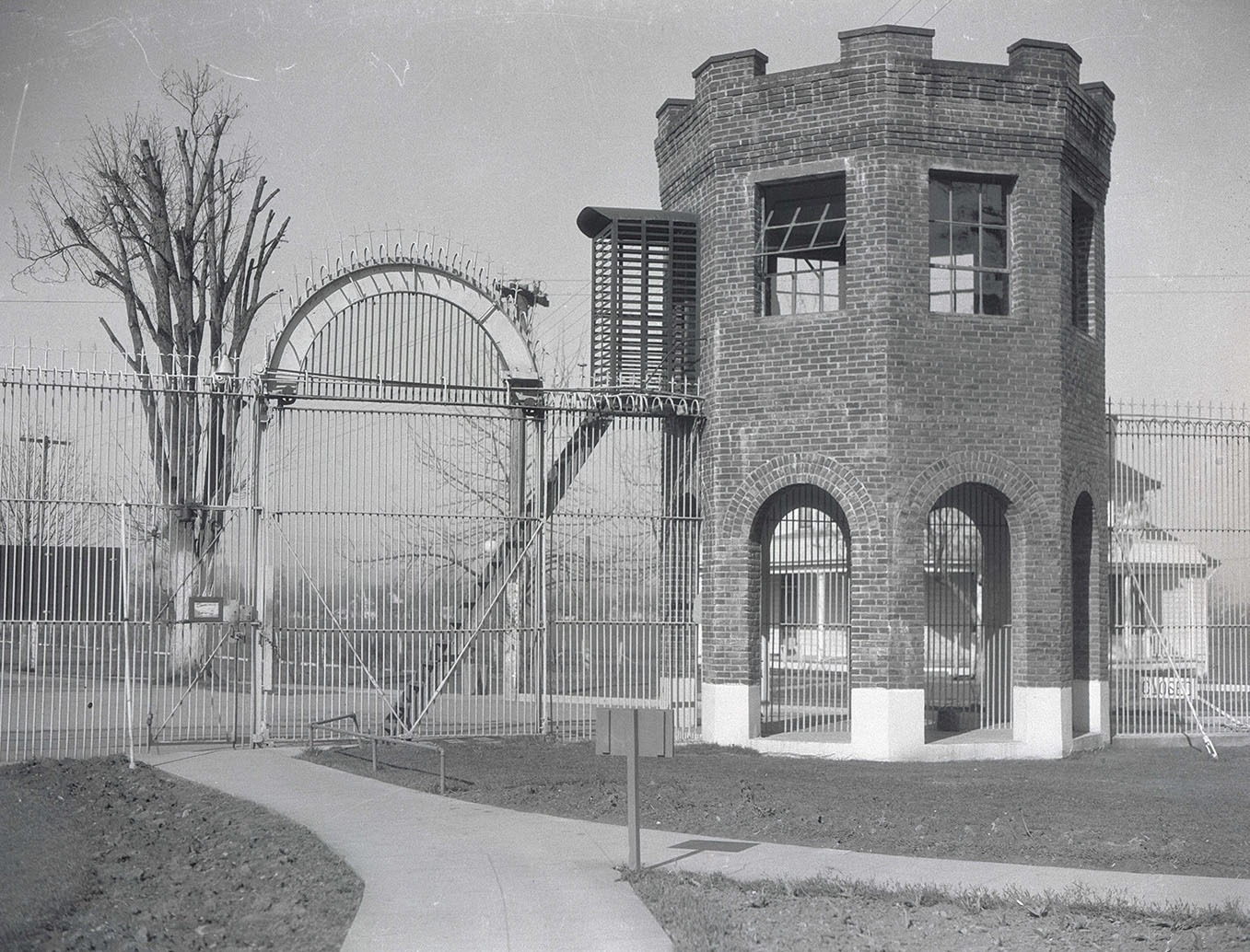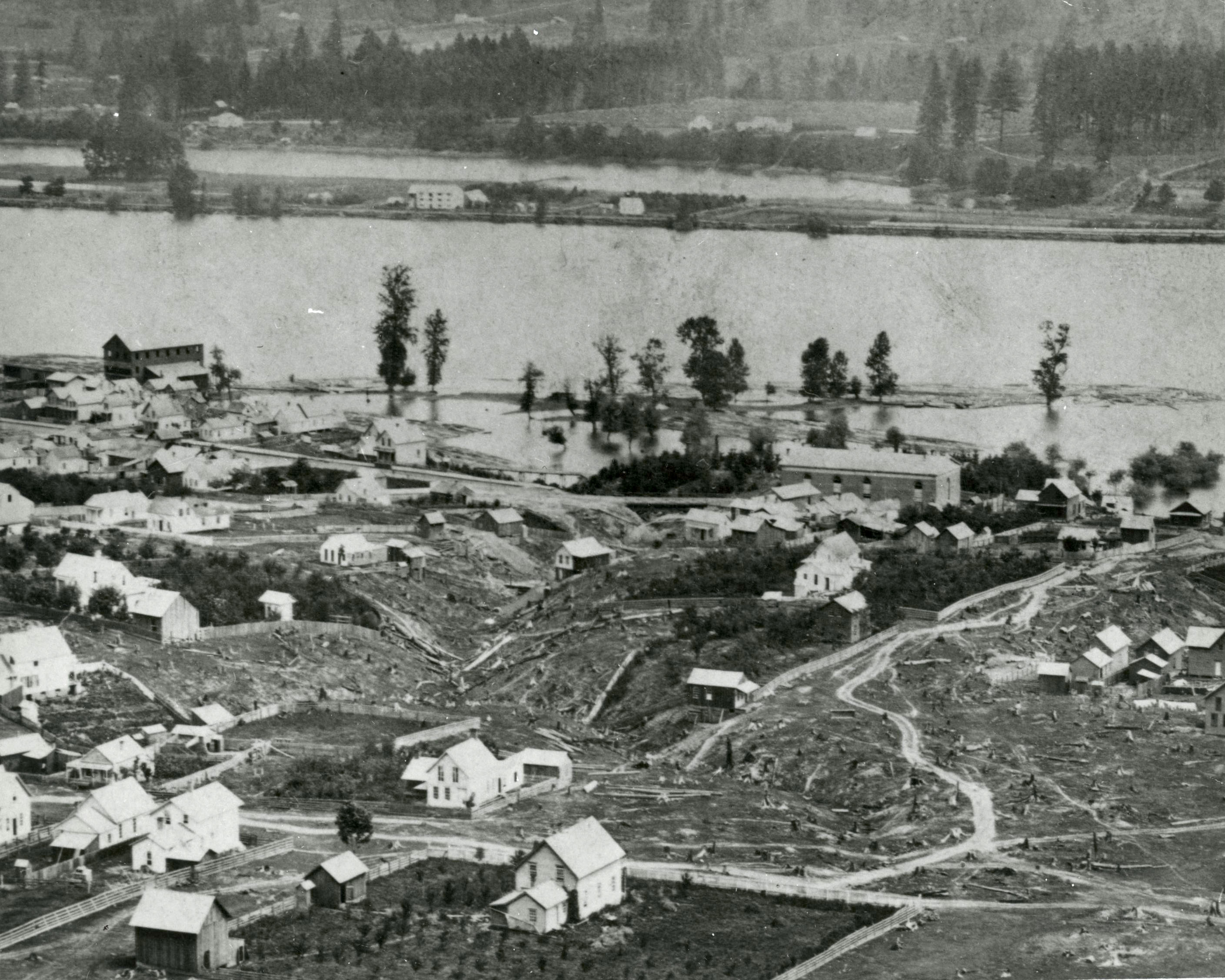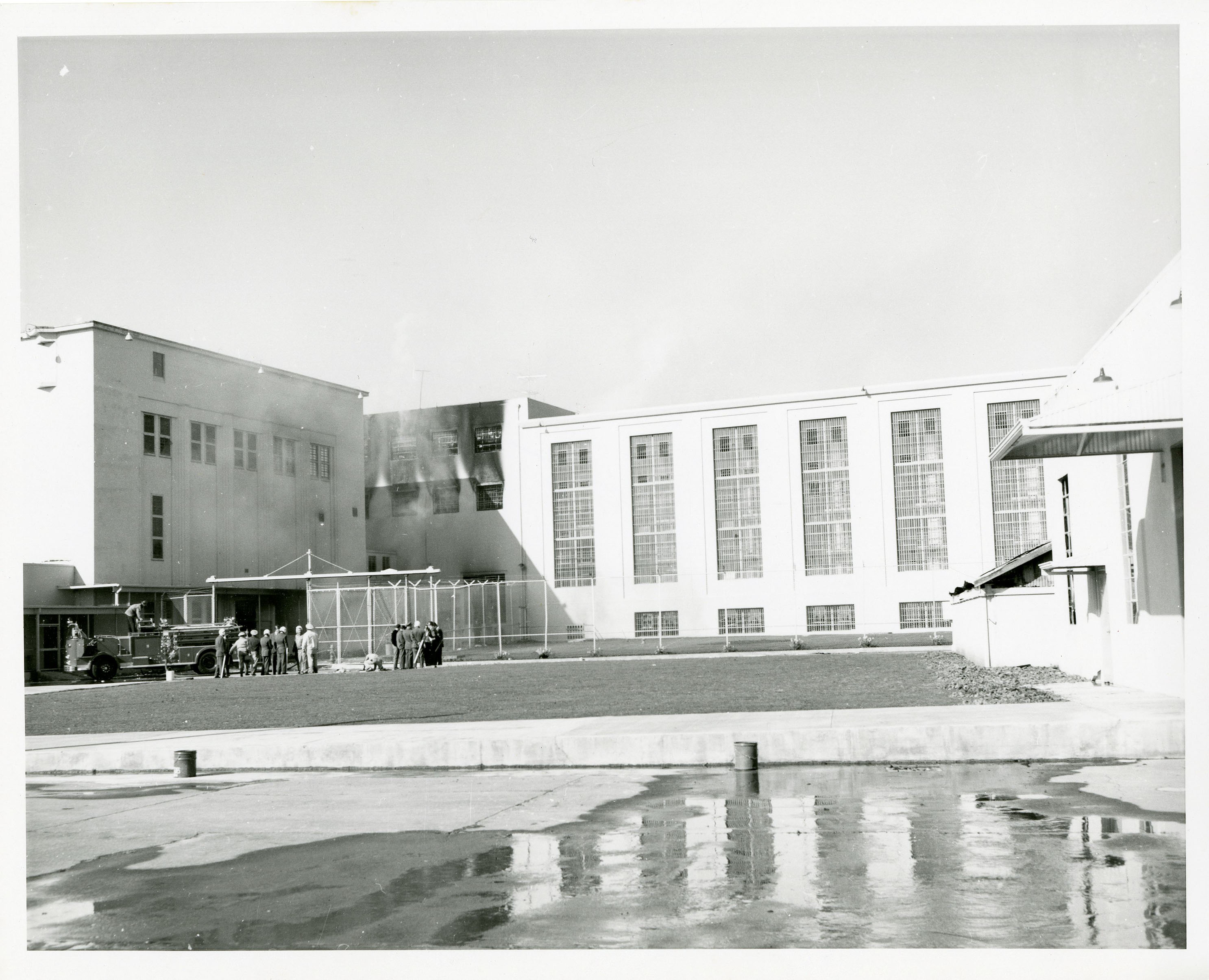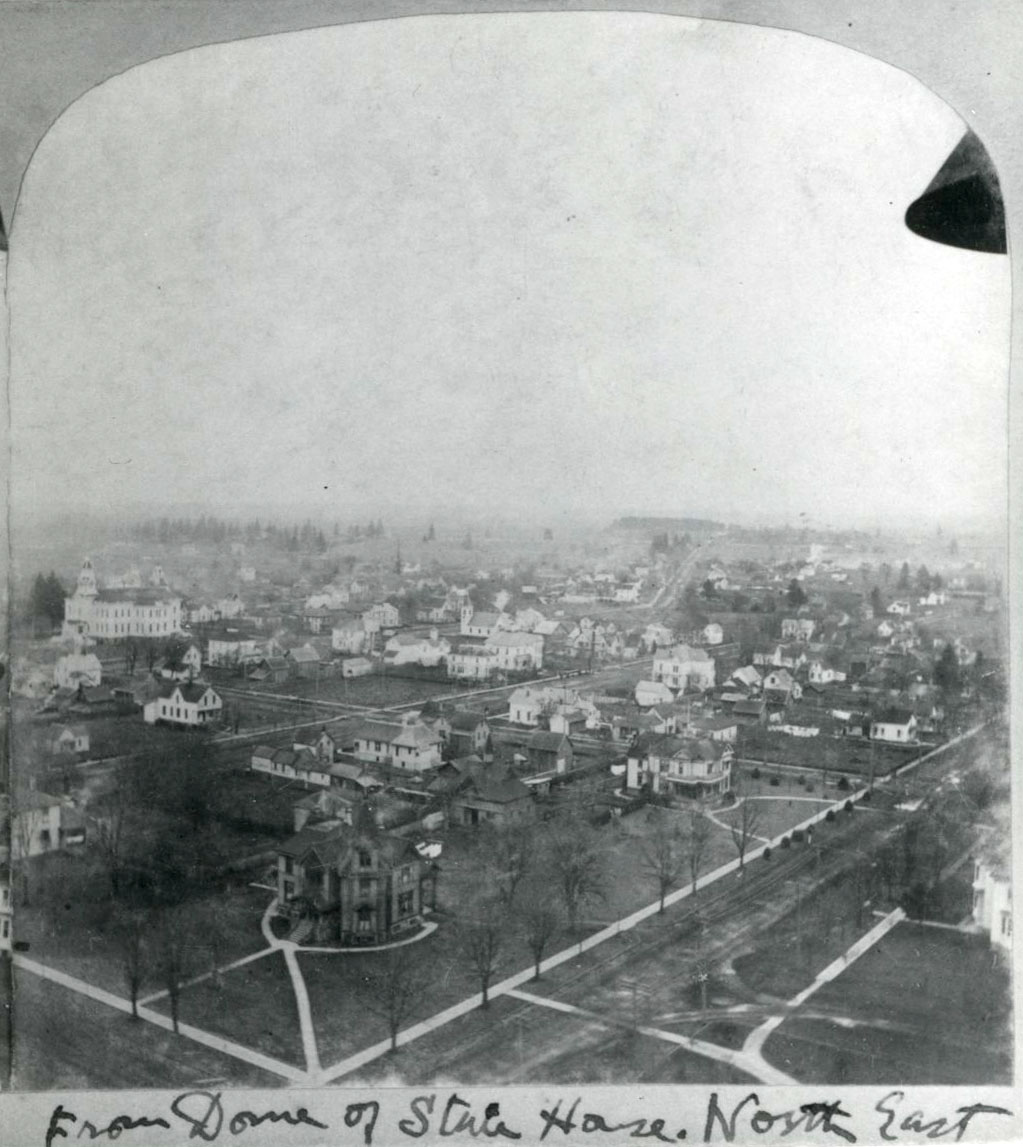The Oregon State Penitentiary, Oregon's only maximum-security prison, sits on 194 acres of land in the heart of Salem, just north of Mill Creek on State Street. Twenty-two acres of the facility are surrounded by a concrete, twenty-five-foot-high wall that extends fifteen feet into the ground, with ten armed guard towers. As of 2010, the inmate capacity was 2,242, with a staff of 457. The prison, operated by the Oregon Department of Corrections, has occupied the Salem site since 1866, two years after the legislature appropriated funds to build the facility. It is the oldest of the fourteen state prisons currently operating in Oregon.
The Oregon Territory Jail, the first prison in Oregon, was built in 1842 in Oregon City, the state's capital at the time. The structure was destroyed by fire four years later. Local jails provided housing for prisoners until 1853, when a Portland site was selected on Front Street on blocks 106 and 107, facing the Willamette River.
Maintaining a secure and effective prison at the site proved difficult, however, as it was split between two sides of the street. The city of Portland refused to reroute Front Street, which would have allowed for the necessary expansion. A failed experiment approved by the legislature to lease the prison to a private company in exchange for low-cost inmate labor reinforced the need for a better location. While the company was in charge of the facility, every prisoner escaped.
In 1866, the Portland site was abandoned and the inmates were moved into temporary wooden housing at the Salem site in order to help with its construction. The new brick structure resembled a fortress, although the fourteen-foot-high wall surrounding the perimeter did little to prevent escapes in the late 1800s and early 1900s. The most famous of these was in 1902, when Harry Tracy and David Merrill acquired a gun, killed three guards, and escaped from the penitentiary grounds. The three-month hunt came to an end when Tracy killed Merrill and himself after being surrounded by a posse in eastern Washington.
To prevent continued escapes, Warden J.C. Gardner patented the Gardner Shackle, also known as the Oregon Boot. This device, a heavy iron band with braces that weighed up to 28 pounds, kept inmates off balance and deprived them of agility. Gardner claimed there was no way to control the inmate population without using the shackle, but wearing it for extended periods of time caused extreme pain and physical damage and often maimed prisoners for life. In 1878, Superintendent Benjamin F. Burch appealed to Governor Stephen F. Chadwick to discontinue the regular use of the shackle, reserving it for disciplinary purposes or when transporting an inmate. The Oregon Boot may have been in use as late as 1939.
As prisons across the nation began to embrace more innovative methods and abandon the severe discipline and harsh punishment of the early 1900s, the Oregon State Penitentiary experienced improvements to the facility and to inmate living conditions. With the appointment of Warden Clarence T. Gladden in 1953, work programs and school classes were developed, and troublemakers were segregated. His appointment followed a number of riots, hunger strikes, and no work strikes in the early 1950s, which coincided with much political and public discussion about the conditions of the prison.
The relative peace under Gladden's administration lasted until March 1968, when the penitentiary experienced the most destructive riot in Oregon's penal history. The riot occurred at a time when political activism and the civil rights movement were changing attitudes in the nation's prisons, putting an end to the "hands off" policy toward prison operations. The legal rights of prisoners were gaining attention, and prisoners demanded reforms.
Convicts at the Oregon State Penitentiary gained control of the building on Saturday, March 9, setting fire to cell blocks and shops, vandalizing property, looting, and holding several employees hostage. Negotiations between the convicts and state officials took place that night and into the next morning. The convicts’ demands—which included a new warden (Hoyt Carl Cupp) and administration, better medical care, and expansion of the work release program—were eventually met. The riot caused several million dollars in structural and water damage.
In 2011, the Oregon State Penitentiary had four cellblocks, two dormitories, five vocational training shops, a physical plant with ten shops, an education department, a library, an infirmary, a canteen, a dining room, a kitchen, two recreation areas, and a yard. The facility has special housing units for maximum security inmates, disciplinary segregation, offenders with psychiatric problems, and inmates sentenced to death. In Oregon, executions are performed by lethal injection, administered at the penitentiary.
The institution specializes in work-based education and programs, including courses in Adult Basic Education, General Educational Development, and English as a Second Language. Oregon Corrections Enterprises runs three industries in the prison: a furniture factory, a metal shop, and laundry services.
The Oregon Minimum Security Prison, built in 1965 as Oregon Women's Correctional Facility, is located next to the main penitentiary and considered part of the same institution. At the end of 2010, it had to close its doors due to budget cuts. Most of the 116 inmates were bused to other prisons in the state, although a few had completed their sentences and were released. Mill Creek Correctional Facility, built in 1891 as the Oregon Reform School and reconstructed as the Farm Annex for the penitentiary in 1929, is now under the administration of the Oregon State Penitentiary, as of May 2011.
-
![]()
Oregon State Penitentiary tower, c. 1930.
Oregon Historical Society Research Library, Oregon Journal, 371N5722
-
![]()
Oregon State Penitentiary, c. 1915.
Oregon Historical Society Research Library, Oregon Journal, 373G0475
-
![]()
South Portland, 1867 (long building on the right is old Portland Penitentiary).
Courtesy Oregon Hist. Soc. Research Lib., C.E. Watkins, 25639
-
![]()
Oregon State Penitentiary, 1968.
Oregon Historical Society Research Library, Org. Lot 123
-
![]()
Oregon State Penitentiary, after the riot, 1968.
Oregon Historical Society Research Library, Org. Lot 123, D019057
Related Entries
Map This on the Oregon History WayFinder
The Oregon History Wayfinder is an interactive map that identifies significant places, people, and events in Oregon history.
Further Reading
"History of the Oregon State Penitentiary." Oregon State Department of Corrections. www.oregon.gov/DOC/OPS/PRISON/osp_history2.shtml.
"Warden Retires; Hostages Freed; Fire Widespread." [Salem] Oregon Statesman, March 11, 1968, p. 1.
Woodford-Beals, Sue and Carl Beals. Oregon State Prison Superintendents: Shepherds of State Street, 1864-2009. Salem, Oregon: Airy Woods Publishing, 2009.






